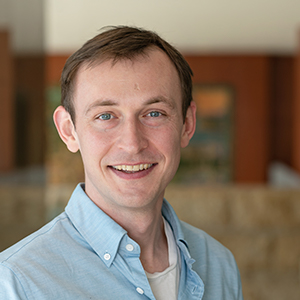On a warm fall day in 1963, crowds gathered near Heber Springs, Ark., to watch President John F. Kennedy dedicate the newly completed Greers Ferry Dam. For almost three decades, residents had pushed for a dam on the Little Red River to control flooding, generate electricity, and create new spaces for outdoor recreation.
In his address, Kennedy flattered the Arkansas congressional delegation and praised the dam, while also making a bold claim that economic growth creates shared prosperity. Projects like the Greers Ferry Dam, he said, “produce wealth, they bring industry, they bring jobs.” He concluded with one of the most famous lines of his presidency: “A rising tide lifts all the boats.”
But even as he said it, Kennedy knew that his phrase was a hope, not a guarantee. For years, the post-World War II economic boom had been raising living standards for the average American. But not everyone was better off. A New Yorker article from earlier that year, read widely inside the administration, described a large, “invisible” mass of poor people in America, whose numbers “would not be significantly reduced by general prosperity.” Some boats lay outside the reach of the tide.

Kennedy’s aphorism now has a life of its own as shorthand for the idea that economic growth will be shared by everyone. Most presidents since have referenced it, usually more than once. It appears in the congressional record more than 300 times and in countless opinion pieces. The natural effect of a tide on boats is appealing for its simplicity. If true, then we need only worry about the tide. The boats will follow.
But what if the metaphor is wrong? It has never been true, for example, that economic benefits are evenly distributed, yet the metaphor suggests that all boats float evenly on the same tide. Social scientists, community leaders, and policymakers need to know how and for whom economies work, and what can be done for those who are excluded. The Opportunity & Inclusive Growth Institute at the Federal Reserve Bank of Minneapolis is bringing together technical expertise and on-the-ground experience to understand “What is inclusive growth?” and how it can be achieved.
The rising tide
Economic growth is a modern concept. Early writings on economic well-being from the late 1700s concluded that most people inevitably lived hand to mouth, on the edge of survival. Advances in technology and the growth of trade since the industrial revolution, however, have created vast amounts of wealth. Even while global population has increased 12 times since 1700, output per person is about 10 times higher. Per person, the United States produced $65,000 worth of goods and services in 2019. That is $260,000 for a family of four, or as much as the 95th percentile family makes today. The tide is high.
But averages hide enormous gulfs in lived experiences. Half of American households in 2019 had annual incomes of $68,000 or less—nothing close to the $260,000 that per capita gross domestic product (GDP) implies for a family of four. This inequality exists despite the fact that workers can produce much more than they used to. “Output per hour worked is about 85 to 90 percent higher than it was four decades ago,” said David Autor, Ford professor of economics at MIT, “but median wages have not increased very much and at the bottom it’s even worse.” Our growth has been “inclusive” only in the roughest sense.
Which boats?
Traditional theories of economic growth sidestepped questions of inclusion. Robert Solow, who served on Kennedy’s Council of Economic Advisers from 1961 to 1962, won a Nobel Prize for his theory of growth. In it, the factors that make a country’s GDP grow make each of its identical workers better off by the same amount. All the boats are the same and sit on an even tide by assumption.
Economists today, however, increasingly focus on inequality and inclusion, and for them the issue begins with how we measure the economy—that is, what it is that we are trying to “grow.” Julie Hotchkiss, a research economist and senior adviser at the Federal Reserve Bank of Atlanta, observes that while “economic growth is most often identified through an expanding stock market or increasing gross domestic product … these aggregate measures ignore how the benefits of growth are distributed across the population.” She favors a measure that combines what happens to output—growth—with what happens to the way that output is shared—inclusion.
Economists typically define inclusion by the income distribution. In 2019, Solow himself argued that income inequality in the United States is “a topic you can’t ignore,” adding: “One of the ways in which the society has changed is, as everyone now knows, [we have] vastly more inequality than we used to have.” Indeed, since 1999, the annual income of a household at the 10th percentile has been stuck at $16,000, while the income of a household at the 90th percentile grew by 20 percent, from $165,000 to $201,000. Even among households whose incomes grew, the amount of that growth varies widely. “Inclusive growth means taking some of the real productivity growth that we’re experiencing and ensuring that it doesn’t all just trickle upward,” Autor said. Over the past 20 years, though, median household income grew by only half as much as the income of households in the 90th percentile.

Being able to measure inclusiveness is an essential first step—imagine if we had no information about how richer and poorer households are doing—but measurement illustrates how a broad view of inclusion is also complex. How many people need to see higher incomes for growth to be inclusive? Even if growth is positive for everyone, when does the divergence in growth rates equal exclusion? Is growth inclusive if it simply maintains existing inequality? “I would say no,” says William Darity Jr., the Samuel DuBois Cook distinguished professor of public policy, African and African American studies, and economics at Duke University. Growth like that can actually worsen disparities between groups, “which I think is what we ultimately have to be concerned about,” he added.
Economists, however, are cautious about taking a stand here. Once you start “thinking about distributions,” says Trevon Logan, the Hazel C. Youngberg trustees distinguished professor of economics at Ohio State University, “you immediately come up with this idea of wanting to be equitable.” Greg Kaplan, professor of economics at the University of Chicago, suggests that one place to start is in areas “where it’s going to be very easy to reach agreement. … ‘People shouldn’t live in extreme poverty.’ Seems hard to find anyone who is going to disagree with that statement. ‘People shouldn’t have billions of dollars of wealth.’ You’re going to find very different views on that statement, maybe surprisingly.” In practice, “inclusive growth” combines measurement with values.

We are not rudderless, though. “If we can understand the root causes of different distributional outcomes and identify potential policy solutions, we believe it is the Federal Reserve’s responsibility to summon our resources to do that research and suggest remedies,” said Federal Reserve Bank of Minneapolis President Neel Kashkari when describing the role of the Institute. Indeed, a range of ideas from both inside and outside economics provides solid footing for how and why to pursue inclusive growth.
We can (and must) do better
As useful as it has been politically, the analogy between boats on a tide and the way the economy works is too simple. Perhaps a sentiment from the late Minnesota Sen. Paul Wellstone would work: “We all do better when we all do better.”
One way that we can do better is by doing what we already know is right: striving for a more just economy. The history and reality of exploitation of Black, Brown, and Indigenous people in the United States is our most glaring exclusion. In her keynote address for the Federal Reserve’s “Racism and the Economy” series last fall, Angela Glover Blackwell, founder in residence at the research and advocacy group PolicyLink, reflected: “During my lifetime, deal[ing] with racism and the toxic inequality that is associated with it has been the right thing to do and the moral thing to do.” People with the power to shape ideas and policies can do better by acknowledging this history and acting on it.
Since racism creates economic exclusion, addressing it will also mean that people at the bottom of the income distribution do better. This has happened before. While he spoke in Arkansas, Kennedy’s administration was negotiating what would become, after his death, the 1964 Civil Rights Act. After it banned discrimination in employment and public accommodations, the gap between Black and White wages in the South nearly halved. But racial inequality persists. More than a quarter of households in 2019 who made less than $15,000 were Black, while less than 7 percent of households who made more than $200,000 were Black. Working toward racial justice is working toward economic equality.

For economists to contribute to racial justice, though, they will have to do better economics. The field, Logan said, lacks a “theory of race, per se” and cannot account for wide racial disparities “in some sort of rationalizable economic way.” Last fall, William Spriggs, chief economist for the AFL-CIO and professor of economics at Howard University, made a similar call in the wake of George Floyd’s death at the hands of Minneapolis police officers. “Hopefully, this moment will cause economists to reflect and rethink how we study racial disparities” and to get out from behind “veiled and sometimes ugly assumptions of inferiority.” “We will get far better policy,” Spriggs wrote, “and we will have a better discipline for it.”
Inclusion puts wind in our sails
Economists have made progress on another argument for inclusive growth: Inclusion will actually create more growth. A concern among some who embrace the “rising tides” metaphor has been that trying to foster inclusion by redistributing resources, for example, will hamper economic growth by reducing incentives to strive for high incomes. “Income inequality,” wrote the late Harvard economist Martin Feldstein, “is not a problem in need of remedy.”
But better economic theory and statistical evidence clarify how exclusion and inequality act as a drag on the economy. To contribute to their fullest, people have to be able to invest in their own productivity. But “because the U.S. is so unequal at so many levels,” Autor said, “a lot of our citizenry is being under-invested in in terms of skills, in terms of health, in terms of safety. Not only is that morally unjust, it is also a wasted opportunity.”
Exclusion and inequality also mean that talented people can’t pursue their ideas, make discoveries, and expand knowledge. In Solow’s classic growth model, for example, the key determinant of prosperity is technology. “If it’s all about technological change,” Logan asks, “then why do we as a society not make investments that would lead to developing the intellectual and innovative capacity of the entire population?” Indeed, research by Michigan State University economist Lisa Cook shows that lynching led to fewer patents by Black inventors. When we do better on inclusion, we all do better economically.
These arguments are gaining new traction among economists, but activists have used them for a long time. Even Kennedy heard them. Five weeks before he spoke of rising tides in Arkansas, he met with the civil rights leaders who organized the March on Washington for Jobs and Freedom. They argued that “the twin evils of racism and economic deprivation” excluded racial minorities from the economy, concluding: “All [of] America is robbed of their potential contribution.”

Community leaders today continue to pursue this vision of inclusion that also spurs growth. “Inclusive growth is what happens when everyone has access to the resources and opportunities they need to thrive,” said Chanda Smith Baker, chief impact officer and senior vice president of the Minneapolis Foundation. Last year, the Thriving by Design Network released a sweeping set of proposals to address racial and rural/urban inequality in Minnesota. The Minnesota EquityBlueprint grew out of agreement that “disparate access to personal and economic opportunity has always been morally wrong, costly to taxpayers, and has been a significant limiting factor on the state’s economy.” Dane Smith, former president of Growth & Justice, a Minnesota think tank, who helped produce the Blueprint, explained: “Reducing economic and racial inequality and poverty rates … increase[s] the demand for the stuff that business produces.”

Community groups are also at the forefront of solutions. Minnesota’s Center for Economic Inclusion works with businesses to “apply an anti-racist lens to all decisions to ensure that all corporate actions reinforce the racial inclusion and equity agenda.” CEO Tawanna Black urged business leaders to invest in minority-owned businesses: “To build that inclusive economy takes supplier diversity strategies that allow us to grow supply chain efforts, which allows small businesses to hire folks in their communities.”
Michael Goze, chief executive officer of the American Indian Community Development Corporation, is concerned with populations who may not be directly reached by business policies. “We have probably a large population that is not in any type of data. They’re not drawing unemployment, they’re not employed, and there’s a whole lot of folks who are disengaged from general data collection points,” he said. His organization also works on housing and substance abuse issues in Native communities, but with an eye toward the future. “If you invest in youth today,” Goze said, “you can uninvest in the department of corrections in 18 years.”
Our evolving view
There is, of course, no single definition of “inclusive growth.” It is multidimensional and complicated, not a natural law to which we are subject like the tides. It challenges the technical abilities of researchers and organizations like the Institute. It demands clear values from local leaders and policymakers. We cannot achieve it by staying in our separate boats. But it also holds the promise that if we do a better job thinking about and working toward inclusive growth, we will all do better in the end.







